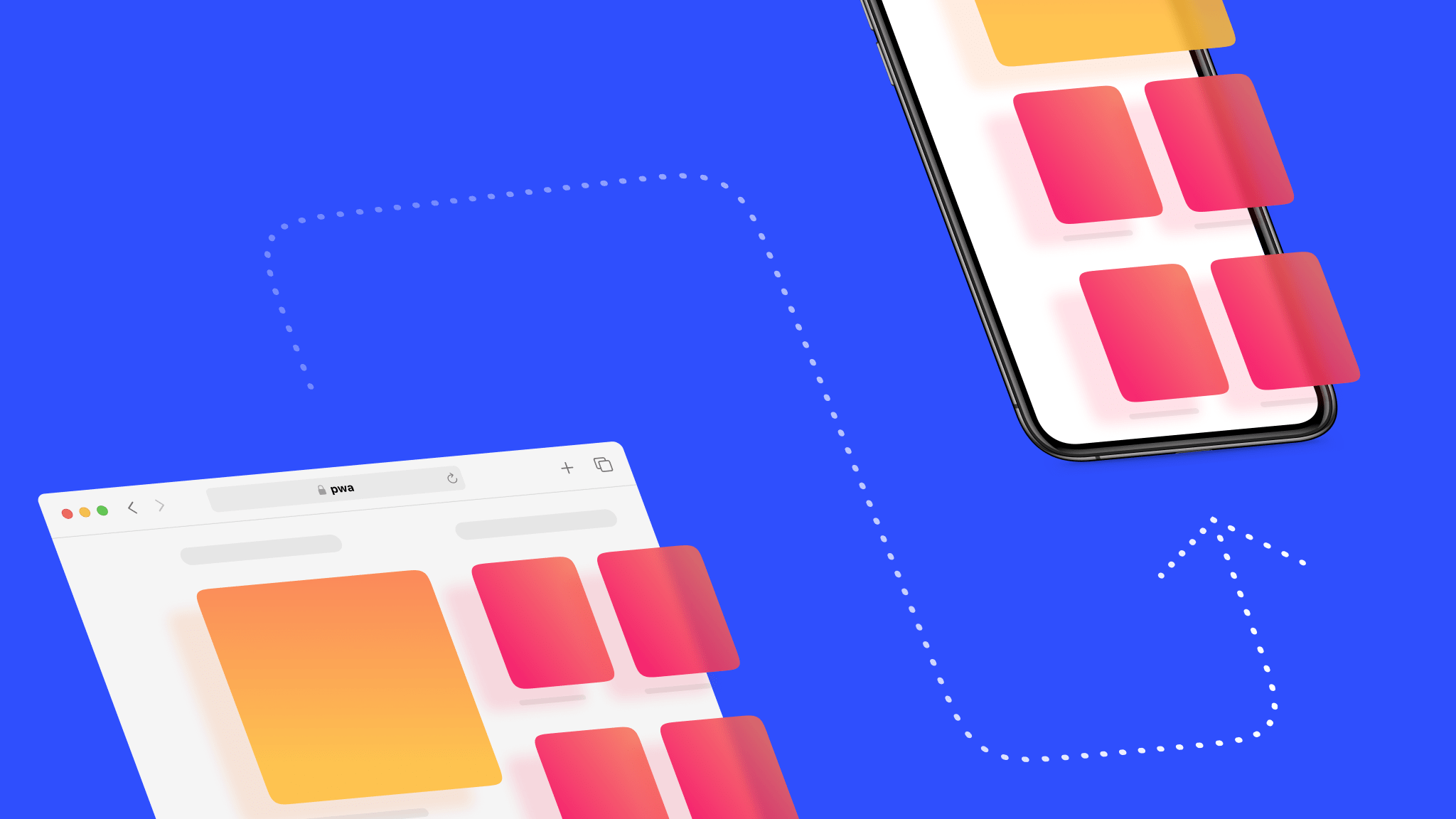Today, when customers do everything on their phones companies should provide the best mobile experience for their visitors. Therefore, some companies choose not to launch a native app. They use Progressive Web Apps (PWA) instead. But what exactly is a Progressive Web App? In this article, we explain the most important advantages and disadvantages you have to take into account. This way, you can determine whether it makes sense to opt for a Progressive Web App.

[toc]
What is a PWA?
PWA (Progressive Web App) is opened by users in the web browser and allows access to key native features, such as:
- Installing the app on the mobile home screen
- Accessing the app offline
- Push messaging/notifications
In other words, the progressive web application offers a user mobile experience similar to a native application. The UX is therefore optimized for the device on which the PWA is used so that the information and functionalities come out best.
If you would like to see how a PWA can benefit your business, we can answer any question — give us a call! Thanks to our experience with PWAs, we will make sure it is a perfect fit for your product.
Most modern browsers support service workers (the core of every progressive web app), and a lot of known tech players like AliExpress, Twitter, Pinterest already employ PWAs. By the way, check also this great list of PWA websites examples.
It is expected that Google will invest heavily in this technology and develop it further in the coming period. Google, the originator of this concept, hoped with PWAs to ensure that content only has to be made once – and not for a website, iOS, and Android separately. This is reminiscent of Flutter, the other programming technique that makes it possible to program simultaneously for both operating systems.
What are the benefits of a PWA?
Below you will find an overview of the most important advantages of progressive web apps.
PWAs are cheaper than other apps
Because content only needs to be produced once, it saves time and money compared to creating content separately for iOS, Android, and a website. Also, PWAs do not need to be updated (some find this feature specifically cool). Users do not have to download new information. If a PWA works, then you no longer have to worry about its development. This makes PWAs a financially attractive alternative, just as is the case with Flutter, for example.
PWAs count toward SEO
The content in a PWA is included in the search results and therefore contributes to Search Engine Optimization. It is possible – with tools from Google – to test how your PWA scores in the search results. Important factors here are the safety (do you use https?) and the loading time of a PWA. Add to that the content must be relevant and unique, as is always the case with SEO. SEO is becoming increasingly critical now that many services and products are being sought online.
PWAs have a “lower usage threshold”
We wrote it before: there is a battle going on for a place on devices. It is also becoming increasingly difficult for native apps to conquer a place in the lives of users. It is, therefore, an advantage that PWAs do not have a high threshold for being put into use. First of all, that threshold is quite low because no new app needs to be downloaded. Thus, your target group can test the app without obligation. Also the app runs offline. This makes it a perfect solution for an MVP to validate your business model. It also takes up less memory than native apps, which sometimes is a key concern for a user.
PWAs you are not dependent on app stores
PWAs can be found via a search engine and other platforms. You could also offer a PWA via a social media channel, home page, or another part of your ecosystem. You are no longer dependent on app stores. App stores, however, have the advantage that they can reach a huge audience in one go.
PWAs allow engaging your mobile users on the web
Just like an app, PWAs are fast and handy, with simple app-like navigation, and, as mentioned above, an add to home screen button, access to smartphone features like push notifications, camera use and, geolocation tracking. User engagement is growing.
What are the disadvantages of PWA?
Disadvantages of PWAs originate from the nature of this form of app development:
No access to app stores
If you develop a PWA, you are not exposed as a company in the Apple or Android app store. Apps are often found because they are visible in one of the well-known app platforms. It is, therefore, a considerable disadvantage that you cannot use this “springboard” to a broader audience.
Fewer functionalities and therefore less UX
Unlike native apps, these web applications have fewer features. iOS does not support all functionalities of PWAs on Apple devices. As a result, the possibilities of PWAs are limited for many users, which is a shame. In a world where the UX (user experience) is at least as necessary as the marketing of the product itself, a lack of user experience is a real loss.
No access to innovations
Not all technical options, such as Bluetooth or Near Field Communication (NFC), can be applied to PWAs. This means that you are limited in the possible applications for your application. The question is whether other future innovations can also be used by PWAs.
No extra room for the business model
It is still a challenge to develop a revenue model or advertising opportunities for PWAs. At the moment, there are fewer options than native apps to subscribe to.
Conclusion
Summarizing above said, PWAs combine the best of the web and the best of apps. PWAs help businesses to increase conversions and page visits, and to extend sessions length. Despite some limitations, its advantages make PWAs a perfect solution for new businesses, and also for media and e-commerce businesses to engage their mobile users on the web.






